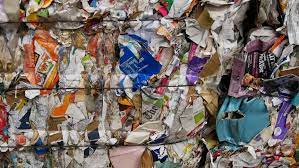From Waste to Resource: The HDPE Recycling Process Explained
The High Density Polyethylene (HDPE) is among the frequently used plastics, renowned for its durability, strength, and versatility. It’s used everywhere from milk jugs and detergent bottles to piping along with plastic bags. As awareness of environmental issues grows recycling HDPE has become more and more crucial. Here’s everything you need to be aware of HDPE recycling.
What is HDPE?
Recycle HDPE is a kind of thermoplastic that is made from petroleum. It is distinguished by its high strength-to-density ratio. This makes it suitable for products that require to stand up to wear and tear. HDPE is also impervious to impact and can endure diverse environmental conditions. This makes it a popular material in a variety of applications.
Why Recycle HDPE?
Recycling HDPE is essential for a number of reasons. Firstly, it reduces the environmental impact of plastic waste which can take years to break down in landfills. Recycling HDPE helps conserve the natural resources by reusing materials rather than acquiring fresh raw materials. In addition, recycling is less energy-intensive than making new HDPE which results in less carbon dioxide emissions.
How is HDPE Recycled?
The process of recycling HDPE includes a number of key steps:
Collection and Sorting: HDPE items are collected from recycling bins, then sorted in a facility that separates them from other types of plastics as well as contaminants.
Cleaning: The sorted HDPE is cleaned to remove any residues, labels, or other impurities that could influence the quality of the recycled material.
Shredding: The fresh HDPE is then shredded into tiny flakes. This makes it easier to process and melt down in the next step.
Extrusion and Melting The HDPE pieces are then melted and formed into pellets through an extrusion process. These pellets are the base material used to manufacture innovative HDPE products.
Manufacturing Recycled HDPE pellets are used to make a variety of new products, including new bottles, pipes, and even lumber made of plastic.
Challenges and Considerations
Despite the benefits, HDPE recycling faces challenges. Infection with other materials could hinder the recycling process, making the proper sorting and cleaning necessary. Furthermore, recycling demand for HDPE products should be high enough to ensure that the recycled material can be used in a commercial. The efforts to raise awareness of consumers and enhance recycling infrastructure are crucial to solving these issues.
Conclusion
HDPE recycling is an important component of sustainable recycling and sustainable environmental management. By gaining a better understanding of and taking part to the recycle process, consumers can help reduce plastic waste, saving resources and reducing carbon emissions. As technology and methods progress, the efficiency and effectiveness of HDPE recycling are likely to improve, paving the way to a more sustainable future.

